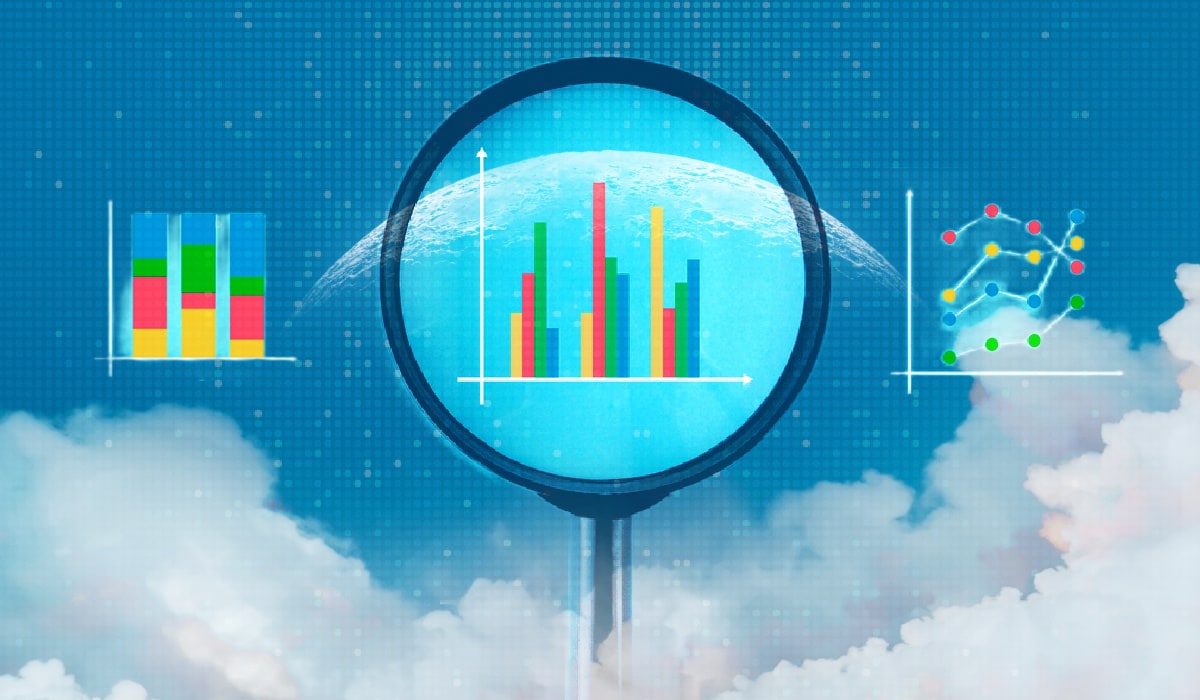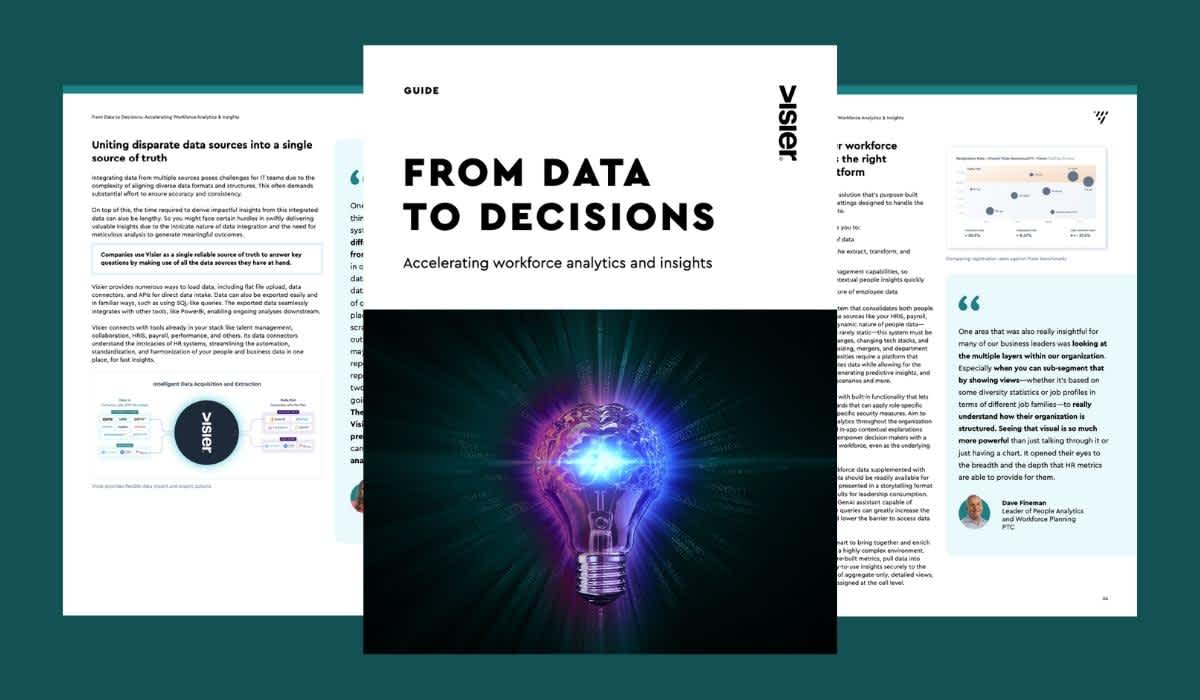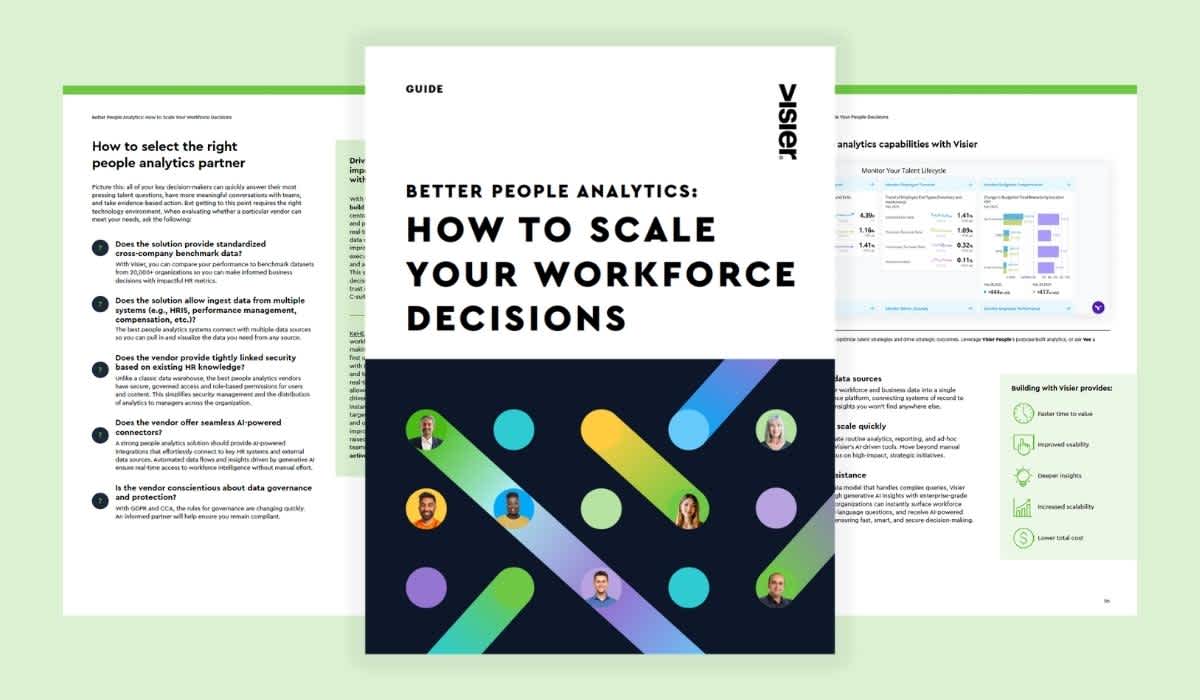HR Data Transformation: A Guide for Businesses in 2024
HR data transformation is a series of processes to convert data into usable formats for analytics and insights. Learn more here.

Data is part of a successful business strategy. If you want to create a strong, productive, and engaged workforce, you need to leverage the power of data. HR data transformation takes raw data and converts it so that you can use it to gain valuable insights.
What is data transformation?
Data transformation is a series of technical processes to convert data from one format to another. These can include cleansing, converting, and structuring data into a format that is easy to read and interpret by both humans and machines.
It is an essential step in the data management process as it helps prepare it for analytics and reporting. Most businesses and departments collect data from multiple sources. You may have resumes, performance reviews, market research, and client information, for example. This means your data will be in multiple formats, which will make its interpretation a challenge.
Plus, multiple sources can also come with errors like duplicate or missing information. Data transformation brings everything to a unified format and helps you eliminate errors so that you can get valuable insights from the analysis phase.

Data transformation examples
There are many ways to transform data, depending on your systems and the data itself. Here are some data transformation examples.
Format conversion
Let’s say you want to perform a skills gap analysis. You need to collect data from a lot of sources, such as resumes, market research, employee questionnaires, or performance reviews. Looking at the data, you notice the dates are in different formats. Some resumes have dates in MM/DD/YYYY format, while others have them in DD/MM/YYYY format.
While this may not seem like a critical issue, it can cause major problems for analytics apps and other systems. This is where data transformation comes in. Using various techniques, such as conversion and aggregation, you can convert date formats and correct names and job titles to ensure there are no more mistakes.
CVS to XML transformation
Data transformation isn’t just about correcting mistakes or discrepancies. It can also be about changing the format of a file so that different apps can use it.
For instance, many companies will have at least a few files stored as CVS (comma-separated values). Not all apps and algorithms can read these files. If that’s the case, you’ll need to use data transformation to bring it to an XML format.
The reverse can also be true. You may have some XML files and an app that requires CVS, so data transformation will again come to the rescue.
The purpose of data transformation in HR
Your employees, and by extension their data, are one of your most important assets. But to leverage it, you need to do more than just collect raw information. Analytics can give you valuable insights into your workforce—what motivates them, what keeps them engaged, and what they need to stay with the company longer.
Before you can apply analytics, though, you need to transform your data to bring it into a unified format. HR teams use data from multiple sources, like human resources information system (HRIS) systems, human capital management (HCM) systems, and payroll systems, and recruiting tools. There are job descriptions, performance reviews, and data on training each employee takes part in. We also can’t forget about compensation and bonuses.
To use all this data and gain those valuable insights, you first need to transform your data. This will allow you to spot patterns and trends that you can later use for workforce planning, creating a positive employee experience, and improving retention, performance, and productivity.
4 benefits of data transformation
Data transformation is a must-have in the data management process and it comes with powerful benefits.
Here are four benefits of data transformation to consider:
1. Consistency and standardization
One of the biggest problems with large data sets is the lack of consistency. Multiple formats may not seem like a critical issue, but they can introduce serious errors when used in various apps and machine learning algorithms.
Data transformation standardizes data, ensuring consistency, accurate analysis, and modeling. You won’t have to worry that your analytics tools aren’t reading data correctly and will be instead able to focus on the results.

2. Improved data quality
When you continuously collect data from multiple sources, the risk of mistakes, outliers, and other inconsistencies increases. These errors can often go unnoticed until they cause serious issues in your analytics process.
Data transformation removes outliers and helps you correct mistakes, ensuring you’re only using high-quality data in all your processes.
3. Higher accuracy of insights and predictions
If your predictions aren’t accurate, they won’t be of much help. Quite the opposite. They can lead to incorrect decisions that will push you further away from your goals.
By improving data quality, data transformation helps you gain more accurate insights, see patterns, and accurately predict trends. You’ll be able to create stronger strategies that boost your productivity and performance.
4. Enhanced security and compliance
Data, especially people data, is sensitive. Privacy regulations, such as the GDPR, have strict rules related to the storage of sensitive personal data. Often, you’ll need to encrypt or even anonymize and aggregate it.
It's important to choose a data transformation tool with a security model that is designed to meet compliance with data privacy regulations.
Types of data transformation
Depending on your systems and your goals, there are various types of data transformation you can choose from.
Scripting. Extracting and transforming data by writing code in Python or SQL is called scripting. These languages are not as challenging as traditional programming languages, but there will still be a learning curve and only some of your employees will know how to use them.
On-premises ETL tools. ETL—extract, transform, load—is the most common method for data transformation and integration. That’s because they can take care of the entire process, from data collection to data storage. On the downside, on-premises ETL tools will come with some infrastructure investments, along with training employees.
Cloud-based ETL tools. These are easier to use than their on-premises counterparts. They have a smaller learning curve and they're made with non-tech users in mind.
Structural data transformation. This type of transformation focuses on reorganizing data. You can move or combine columns and give databases new names. You’ll be able to change the dataset’s geometry, topology, or characteristics. How complicated or simple this transformation is depends on your databases, datasets, and goals.
How to transform data
Data transformation means modifying and preparing raw data to make it suitable for analysis, data visualization, and decision-making. Throughout the process, you’ll be addressing challenges like inconsistent formats, missing or duplicate information, or outliers.
To begin the data transformation process, you must first make sure your data sources are complete. Be clear on the data structure at hand and potential issues that may arise. Choose the type of transformation you’ll use, be it scripting, ETL, or something else entirely. Last, but not least, set your goals and decide how you will use the transformed data.
Data transformation techniques and steps
There are several techniques you can use to transform your data. Here are some of the most common ones.
1. Revising
Revising data means ensuring that it’s organized correctly. You eliminate redundancies, cleanse data, remove duplicates, and convert formats where needed.
After all the changes, the last step is data validation, where you’ll make sure everything is correct and you’ll remove any outliers that remain.
2. Manipulation
Manipulation means creating new data values from existing ones or changing existing data through various computations. You can also use it to convert unstructured data to structured data so that you can use it with machine learning algorithms.
Examples include
Aggregating values through summarization
Sorting, ordering, or indexing data
Scaling, normalization, and standardization
3. Aggregation
Aggregation means gathering raw data from multiple sources and combining it into a summary that you can later use for analysis. Statistics are the simplest example here and one that will be used by most companies at some point.
4. Discretization
Discretization creates interval labels into continuous data, making it easier to analyze. Not everyone will need this technique, but it is useful with machine learning algorithms that perform better on categorical or ordinal data.
How Visier facilitates HR data transformation
HR data transformation is a complex but vital process for organizations. It helps you manage vast amounts of data and prepares it for the analysis process, which will give you valuable insights.
The tools you use can make or break your data management and transformation strategy. Visier offers a complete solution that includes ETL data processing and an event-based analytic model that supports complex people data and manages the constant flux of organizational changes.
Employee data is not static. It evolves constantly. People come and go, learn new skills, and get promoted to a new position. Visier’s data processing engine can handle the evolving, dynamic events of the employee journey and its unique time-based attributes.
Data management comes with challenges such as security, compliance, and data that needs cleansing and formatting. Plus, the more your data grows, the bigger the risk that your databases will become unreliable. Visier takes care of all the steps in the data lifecycle.
It starts with data ingestion through pre-built data connectors, direct data intake from APIs, or by uploading flat files. Next, it supports the transformation process, helping you cleanse data and prepare it so that it’s ready for people analytics.
It will rapidly deliver workforce insights, all while ensuring compliance and security through a SOC 2.0 compliant security layer. You’ll also be able to set role-based permissions, minimizing the risk of unauthorized access.
And if you’re worried about scaling, Visier’s solution ensures the database platform will be reliable even as your data expands, supporting your business growth without compromising efficiency.
On the Outsmart blog, we write about people analytics and HR technology topics like how bad data can’t stop good people analytics, the benefits of augmented analytics, and everything you need to know about HR data sources and HR data connectors. We also report on trending topics like artificial intelligence, using generative AI in HR, and how skills are rapidly evolving, and advise on people data best practices like how to ingest people data and business data, how to turn source data into insights, and reports vs. analytics. But if you really want to know the bread and butter of Visier, read our post about the benefits of people analytics.



